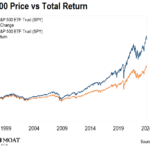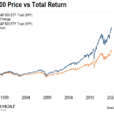
While we wait on the Trump administration’s proposal for reforming the tax code – a proposal that is likely to include a dramatic reduction in corporate tax rates – we might as well continue the discussion on how to build what I call “modern portfolio diversification” into portfolios.
To review, the idea here is to design portfolios that attempt to “be around” the benchmark return during most calendar years and then strive to “lose less” during those nasty bear market periods.
Last time, we discussed the idea of incorporating some form of risk management strategy into our portfolios. The idea is certainly simple enough; one attempts to reduce market exposure when risk factors are high. Piece of cake, right? After all, there are a gazillion different indicators available on the internet today to help you out with this. Heck, I even publish a pretty complete indicator review every Monday morning. So, finding indicators isn’t a problem.
But here’s the rub. History is replete with markets that saw risk factors stay high for very long periods of time. This type of situation can make one look/feel VERY foolish as stocks charge higher in the face of sky high valuations, a developing crisis, an unfriendly Fed, an external event, etc. For example, does anybody remember what happened during 1999?
If you will recall, stock market valuations were at never-before seen levels. It was a new era. Analysts were making up new indicators for the new paradigm because traditional metrics were clearly wrong. This time it really was different!
And yet, stocks kept moving higher, for months. In fact, the S&P 500 didn’t actually start to decline in earnest until the spring of 2000.
So, if you tried to manage the risk of insanely high valuations that were present in 1999, you were made to look like a fool. Sure, the broad market indices struggled, but the Nasdaq kept ripping. Risk? What risk?
The point is that if you take action to avoid a potential storm, you must recognize that you could be wrong!
The storm may take much longer than you anticipated to arrive. The storm may not be as bad as you expected. Or, even worse, the storm may not come at all.















